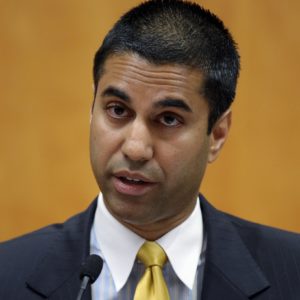A Federal Communications Commissioner is investigating how wireless carriers administering the government’s ‘Obama phone’ Lifeline program are fraudulently claiming money meant for low-income Americans living on tribal lands.
The latest probe in FCC Commissioner Ajit Pai’s ongoing investigation into Lifeline abuse and fraud by wireless carriers follows two recent enforcement actions against carriers for improperly claiming an enhanced subsidy meant to help low-income residents on depressed and rural tribal lands help pay for cellphone service.
Wireless subscribers can receive up to $25 over the standard $9.25 monthly subsidy for a total of $34.25 if they live on tribal lands — areas that often have lower employment and income compared to other rural areas in the U.S. The Lifeline program is funded by the FCC’s Universal Service Fund, paid for via a monthly fee on the average American consumer’s phone bill, and overseen by the Universal Services Administrative Company (USAC), which distributes the subsidies to wireless carriers.
In a Wednesday letter to USAC CEO Chris Henderson, Pai highlighted the potential for carriers to fraudulently claim the enhanced subsidy.
“The enhanced subsidy offers a tremendous incentive for unscrupulous carriers to try to exploit our rules, and we know that some have,” Pai wrote. “Icon Telecom, for example, claimed tens of thousands of phantom customers in Oklahoma to profit from the enhanced subsidies on tribal lands before its scheme was ultimately uncovered and Icon’s owner plead guilty to money laundering. More recently, the FCC settled an investigation into Blue Jay Wireless’s practices in Hawaii.”
Icon’s fraudulent activity, jointly investigated by the FCC, FBI and IRS, ended with Icon’s suspension in 2015 and criminal charges for its CEO in 2014. Texas-based Blue Jay Wireless was forced to pay a $2 million settlement fee levied by the FCC Enforcement Bureau in July for “improperly claiming” extra subsidies for several thousand Hawaiian customers supposedly living on Hawaiian Home Lands.
“Even though Blue Jay collected every subscriber’s address, it did not verify whether those addresses were on tribal lands,” Pai said. “In fact, it sought enhanced subsidies even when a subscriber’s address made him/her clearly ineligible. By 2014, the Hawaii Public Utilities Commission staff had discovered that Blue Jay was claiming more subscribers than the total number of households in the Hawaiian Home Lands!”
Though a slap on the wrist by comparison, Pai earlier this summer revealed Blue Jay to be one of the 16 carriers his office is investigating for various forms of Lifeline fraud, and added he “flagged further suspicious conduct for the Enforcement Bureau’s investigation earlier this year.”
In the Wednesday letter, Pai asked USAC if it designates specific tribal lands eligible for the enhanced subsidy and who it provides such maps to, what safeguards exist to compel subscribers to certify “under penalty of perjury” they live on tribal lands, if recipients are recorded in the National Lifeline Accountability Database (NLAD), how the federal government certifies before distributing the subsidy, details of any audits or investigations into carriers claiming the enhanced subsidy, and if USAC and wireless carriers in Oklahoma are complying with an updated map of eligible tribal lands the FCC changed in 2015.
Pai previously singled out Oklahoma as one of the costliest states for Lifeline as a result of the enhanced subsidy. In Oklahoma tribal lands, Lifeline subscribers are eligible for the max $34.25 monthly subsidy whether they are Native Americans or not. In 2014, Oklahoma cost the Lifeline program the second highest total — $128 million — despite the state ranking 28th in population. The vast majority of Oklahoma’s claimants — 99.5 percent — received the maximum subsidy.

